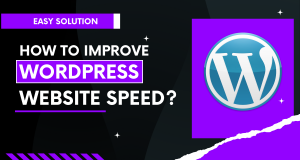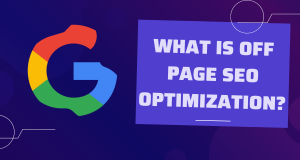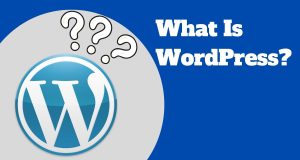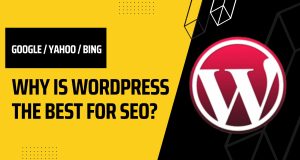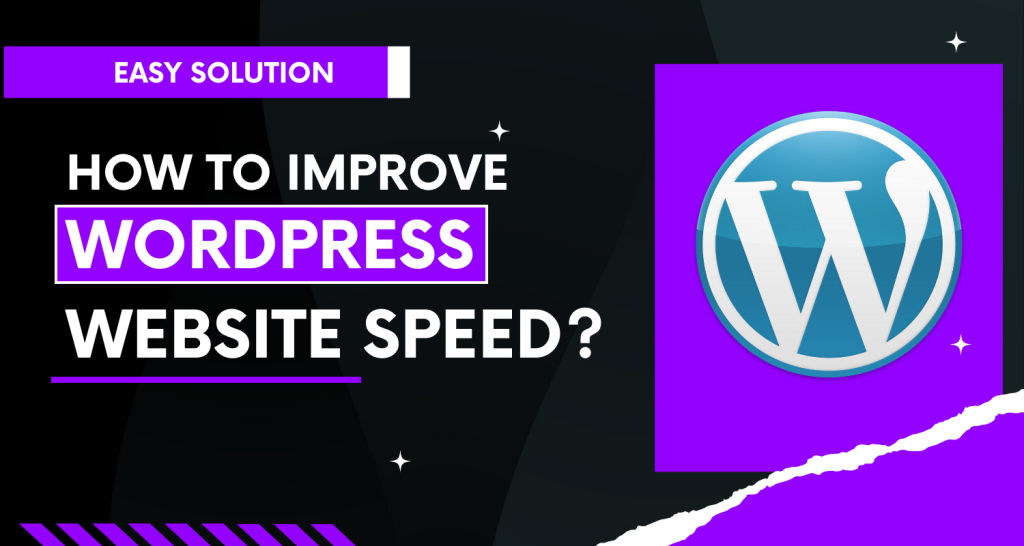
How to Improve WordPress Site Speed?
improve wordpress site speed, wordpress speed up, wordpress speed, wordpress website speed up, improve site speed, if we try to answer the question we need to first know what is Fast Website. We try to give the answer of the question and also i will try to give the answer of some relative popular question like, improve wordpress site speed, wordpress speed up, wordpress speed, wordpress website speed up, improve site speed. Check those five question those are very popular question. So I am writing answers from my point of view about those questions.
Improve wordpress site speed?
wordpress speed up?
What is wordpress website speed up?
How to improve site speed?
Everything in the modern digital world revolves around effectiveness and speed. There’s little doubt that your traffic and revenue are being negatively impacted if your website loads slower than it should. Many developers and business owners ask how to speed up WordPress blogs after realizing this reality. You’ll learn why quick load times are important from the material that follows, and you’ll also get some advice on how to make your WordPress site faster.
WordPress Website Speed Up
WordPress is an extremely effective content creation technology that has swept the globe. Over 75 million websites have really been made using the platform. To make things appear flawless and let your branding stand out, as with all other website design tools, you’ll need plugins, themes, and other tools. Unfortunately, regardless of your content management system, these tools can make things take longer.
Fortunately, there are approaches to accelerate your website. You may quickly speed things up by managing your themes, pictures, plugins, and other content properly. Just keep in mind that before a consumer can fully appreciate your page, every content management system will need to load all connected elements, whether they are visible on the page or operating in the background.
You might be wondering at this point how fast your page loads affect how users feel about it. Unfortunately, if your page loads slowly, they might not be doing anything as all.
Why Your WordPress Site Needs to Be Fast?
According to studies, between 2000 and 2016, the average human attention span decreased from 12 to 7 seconds.
What does this mean for you, the owner of a website?
You only have a brief window of time to engage visitors with your content and persuade them to stay on your website.
Users may quit your website before it even loads if it is too slow.
A 1 second delay in page load time can result in a 7{fc8e20d28177dbe578324c3d0be48177c4efe8bb0de3e0162ace4d308058eecb} loss in conversions, an 11{fc8e20d28177dbe578324c3d0be48177c4efe8bb0de3e0162ace4d308058eecb} decline in page views, and a 16{fc8e20d28177dbe578324c3d0be48177c4efe8bb0de3e0162ace4d308058eecb} decrease in customer satisfaction, according to a StrangeLoop case study involving Amazon, Google, and other major sites.
Slower websites are already being penalized by Google and other search engines by being pushed down in the search results, which results in fewer traffic for such websites.
In conclusion, you must make your WordPress website FAST if you want to increase traffic, subscribers, and cash from your website.
Even More Vital for Mobile Is Site Speed:
You might not be aware that speed has a significant impact on how Google indexes mobile searches, despite the fact that the prevalence of mobile devices and mobile use is nothing new. You can get a respectable rating even if your site loads slowly but still strongly connects to some search terms. Google does, however, give preference to speedier mobile sites.
One in five people in the United States identify as “mobile only” internet users. If you’re worried about how quickly your mobile site will load, you might want to consider choosing a contemporary WordPress theme and selecting plugins that are responsive design-based.
When Should a Website Load?
So, how quickly is too quickly? According to Google, keeping your loading times at three seconds or less is the best practice. The likelihood of a bounce (a user departing immediately) climbs by 32{fc8e20d28177dbe578324c3d0be48177c4efe8bb0de3e0162ace4d308058eecb} as loading times grow from one to three seconds, according to research.
Furthermore, the likelihood of a bounce rises by 90{fc8e20d28177dbe578324c3d0be48177c4efe8bb0de3e0162ace4d308058eecb} for sites that take five seconds or longer to load. Therefore, you should aim for typical loading times of under three seconds if you wish to keep visitors rather than lose them (and ideally quicker than that).
What Causes Your WordPress Website to Slow Down?
There will probably be several suggestions for improvement in your speed test report. The majority of material, meanwhile, is technical jargon that is difficult for beginners to understand.
The secret to increasing performance and making better long-term decisions is to identify what causes your website to load slowly.
The main reasons why a WordPress website is slow are:
Web hosting – A poorly configured web hosting server will slow down your website.
WordPress configuration – If your WordPress website is not serving cached pages, your server will get overloaded, resulting in a slowdown or complete crash of your website.
Page Size – Mostly unoptimized photos for the web.
Bad plugins – Using a plugin that is badly coded will cause your website to load far more slowly.
External scripts – Ads, font loaders, and other external programs can all significantly affect how well your website performs.
Let’s look at ways to speed up your WordPress website now that you know what causes it to load slowly.
1. Pick a more reliable web host.
The hosting of your WordPress website is the main aspect that affects how quickly a website loads. Hosting your new website with a shared hosting company that provides “unlimited” bandwidth, space, emails, domains, and other services could seem like a good idea. The aspect about this offer that we frequently overlook is the fact that most shared hosting setups cannot guarantee 99.9{fc8e20d28177dbe578324c3d0be48177c4efe8bb0de3e0162ace4d308058eecb} uptime or good loading times during periods of high traffic.
Because you are sharing a server with multiple other websites and cannot control how many resources they are utilizing, shared hosting typically provides a worse performance.
Additionally, you are unsure of the servers’ actual optimization levels.
Thankfully, technology has improved in the web hosting sector, and costs for cloud hosting services have come down over time. Today, you can get inexpensive dedicated cloud servers from companies like SiteGround, DigitalOcean, Amazon Web Services, and even Google Compute Engine. But because you have to set up the servers from scratch, it can be difficult to set them up. The chore of setting up efficient cloud servers is made simple with the help of web hosting companies like Cloudways (where I work).
2. Remove Inactive Plugins and Themes:
The next step to a fast site is to delete unwanted plugins and themes, in addition to the fact that you should always maintain them updated. Unused plugins and themes can hinder the functionality of WordPress sites in addition to posing security risks.
You must first deactivate the plugin in order to remove it. Then you can delete the plugins you no longer desire by going to your list of inactive plugins
Visit this helpful post to learn how to clear up plugins on a multisite network.
Simply navigate to Appearance > Themes and delete any undesirable themes that are no longer active.
3. Organize Your Media Collection:
You might begin to amass photographs over time that are no longer needed. You should think about eliminating unused media to make room.
Using a plugin like Media Cleaner or doing it manually are also options for manually removing unneeded media. Go to Add Media -> Media Library -> Unattached and then delete the files you no longer need to manually remove useless media.
Check out this useful article to find out more about how to organize your WordPress media library.
4. Purge Your Database:
Your WordPress database will gradually fill with junk if you don’t check it. Your website can load slowly due to this extraneous clutter. However, you can shrink your database size for quicker loading by doing routine cleanups.
For instance, post modifications may consume a sizable amount of space that is not required. If you have a post with 100KB of material and five revisions, the total amount of wasted space is roughly 500KB.
Through phpMyAdmin, you may manually clean out your database, but doing so might be dangerous and destructive if you don’t know what you’re doing. Installing a plugin to complete this task is the safer option if you’re not a tech wiz. To sweep through your database and remove stuff like outdated revisions, spam comments, MySQL queries, and more, you can trust WP-Sweep and Advanced Database Cleaner.
5. Disable Javascript and CSS that Block Rendering:
This tip, which might be challenging to interpret, may have come up while you were utilizing page test tools to gauge the speed of your website. You’ll probably notice that several JavaScript files (.js files) are loading before your “start render” line if you use a tool like webpagetest.org or Pingdom to view your page’s waterfall view. Render-blocking JavaScript is what this is.
JavaScript’s primary purpose is to carry out an action on a web page, such as displaying a popup or changing the images in a slider. Actually, these actions don’t need to be loaded until your site’s content and styles have fully loaded. Therefore, these tools actually mean to load this content later on in your page rather than at the top when they state “Defer JavaScript Parsing.” There are certain plugins available that can assist you in putting off this JavaScript, such as WP Critical CSS.
6. Minify JavaScript, HTML, and CSS:
Your website may become slow to load and navigate as a result of accumulated CSS, HTML, and other source code files. You should think about minifying the code on your website to increase its speed.
Your site’s backend will be made into a lean, mean machine through minification. By removing extra characters like spaces, line breaks, and comments, this technique serves to shrink the size of HTML, JavaScript, and CSS files. As a result, less data must be transferred, which speeds up file processing and web page loading. A variety of plugins designed to minify code are available.
One of the best-rated free plugins for this job is Autoptimize. Try the paid plugin WP Rocket as well, which aids in site optimization through minification. Another excellent choice for making CSS code simpler is CSS Compressor.
7. Image Optimization:
Keeping a website visitor interested requires the use of images. Even though your website probably has a ton of gorgeous photographs, it’s a good idea to optimize these images for quick page loads. You may optimize your photographs in a variety of ways, such as by compressing the images, adding alt language and titles, and making an image sitemap. Check out this article on how to optimize your photos for WordPress to find out more about how to do it.
8. Lazy-Load Long Pages:
Lazy Loading can be a big time saving for one-page websites and websites with a lengthy main page. In essence, lazy loading stops components on your page from loading until a visitor scrolls down to see them. This enables your site to start rendering more quickly by preventing the entire content of your lengthy page from loading all at once. BJ Lazy Load is a popular plugin that is used for this.
9. Page comment limit:
While it’s great to have so many people read your blog content, many comments can also cause a page to load slowly. To reduce the time it takes for them to load, it is a good idea to divide the comment area among pages.
Simply tick the “Break comments into pages” box under Settings -> Discussion to restrict the amount of comments that show per page. The quantity of comments each page is then a choice (default is set to 50).
This should reduce memory usage and speed up page loads for comments-heavy articles and pages.
10. Minimize Redirects:
Redirects can be useful in some situations, but unneeded ones, like 301 redirects and redirect chains, can cause significant delays. The quantity of additional information requests made to your server should be kept to a minimum.
11. Minimize Post-Editing:
Post modifications save any change you make to a piece of content indefinitely, which can slow down your website. You might decide to restrict the amount of modifications per post in order to speed up your website.
To do so, open the wp-config.php file and add this line of code to limit the number of post revisions:
define( ‘WP_POST_REVISIONS’, 4 );
There will be four modifications each post because the number in this case signifies four. By adjusting the value to 0 or false, you can modify this quantity or even turn off revisions.
12. Turn off Trackbacks and Pingbacks:
Pingbacks and trackbacks are two terms that you might not be familiar with, yet some people view them as legacy features. However, it’s still a good idea to make sure they are disabled because they can slow down page loading.
Simply select “Allow link notifications from other blogs…” and uncheck it in Settings -> Discussion to turn off pingbacks and trackbacks.
13. Use a CDN:
Your content should be delivered incredibly quickly regardless of the user’s location. However, it’s not always possible to do this. that is, if your website is not connected to a global infrastructure that includes data centers. A content delivery network (CDN) comes in handy because distance might cause delays in the transmission of content.
Because your website will use an optimized server that is nearest to your site visitor when enabled, a CDN results in quicker page loads. Based on the users’ locations, the data center will transmit static material and files to them after storing them. Because the static content is already available rather than requesting a ton of HTTP at once, this can assist reduce external HTTP requests.
Your site’s popularity and requirements will determine the CDN you select. MaxCDN, Cloudflare, and CacheFly are a few WordPress CDN options. (The User Portal can be used to configure MaxCDN on WP Engine.)
14. Use Browser Caching:
Your web server includes browser directives on how long the web page should be cached in your visitors’ browsers when HTTP headers are configured to define cache expiration time. This instructs the visitor’s browser to download your website’s components—like CSS, JavaScript, and images—from their local hard drive rather than from a remote server. The browser will load your website more quickly because there will be fewer network connections for it to make.
In order for the browser to know when to retrieve the resources from the network as if they were new rather than from their local system, it’s also crucial that your HTTP headers contain an expiration date.
Since our servers are already configured to handle WordPress websites, we at WP Engine take care of this aspect for you. By default, static resources like photos, CSS, and JavaScript are set to expire after 30 days, and pages are configured to expire every 10 minutes.

